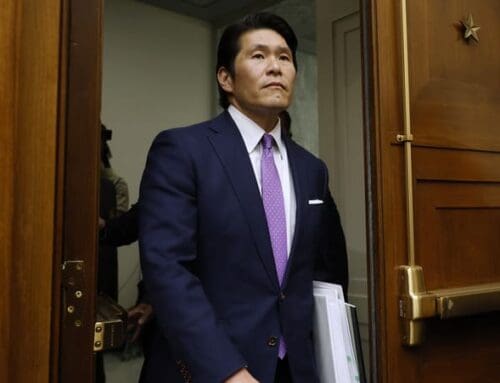

South Africa’s small nuclear reactors
Small Modular Reactors (SMRs) are in vogue now, and it so happens that South Africa is a world leader in this nuclear technology. “Modular” means that the power units come in modules, which are made in factories rather than on construction sites.
Our Pebble Bed Modular Reactor (PBMR) was the most advanced in the world and came close to commercial operation before the project was abandoned. We are now in advanced stages of design for two smaller, simpler SMRs, which have the potential to gain huge markets at home and abroad, notably in Africa where most countries have small electricity grids. They also have the potential to provide plentiful, safe, reliable and affordable electricity for South Africa.
There is sometimes a conception that SMRs are a magic pill that will overcome insurmountable difficulties in conventional nuclear power reactors. This is wrong on two counts. Conventional nuclear reactors, which are large, do not have insurmountable difficulties. For over sixty years they have provided the world with the safest, cleanest, most reliable, most sustainable grid electricity it has ever known, always affordable and often the cheapest energy available. They do have certain problems though, such as their large size, the long time it takes to shut them down safely, and the slight chance of serious accidents.
SMRs can remove any chance of serious accidents. They can be used in niche markets, such as in small countries, in remote settings, and to provide heat and power to industries. But, in the initial stages at least, their electricity will be more expensive per kilowatt-hour (kWh) than that from conventional reactors.
Nuclear power has the best safety record of any energy source, which includes coal, gas, hydro, solar and wind. But there have been nuclear power accidents. There are two types. The first is runaway reactivity, when the power rises beyond control. This is what happened at Chernobyl in the Ukraine in April 1986. The fundamental cause was bad reactor design. In a well-designed reactor, such as is used in the West and in most Russian plants, any deviation from normal operating conditions will slow the reactor down. In the case of Chernobyl, at certain conditions of low power, a deviation could speed it up, which is what happened. At Koeberg, such a deviation would have slowed it down.
The second type of accident is fuel meltdown, where the fuel becomes so hot that it suffers damage, causing molten fuel to leak out and release radiation. This is what happened at Three Mile Island in the USA in 1979, and at Fukushima Daiichi on the east coast of Japan in March 2011. In neither case was anyone hurt by the leaking radiation, whose intensity was too low to cause illness. Both types of accident, runaway reactivity and overheated fuel, are physically impossible in South Africa’s SMRs.
The SMRs are not safer because they are small but because they have a special configuration. You could have the same safe configuration with big reactors. But the small ones are better suited to it. Let me try to explain.
There are three essential components of a nuclear reactor. The first is the fuel, which is usually enriched uranium. It must be able to sustain a nuclear fission chain reaction; this is when a neutron splits a uranium nucleus, releasing vast amounts of power and releasing two or more neutrons, which split more nuclei, releasing more neutrons, and so on. The second is the coolant, which may be a liquid or a gas. The coolant removes heat from the reactor to drive a turbine, which drives a generator to make electricity. The usual coolants are water (used in Koeberg and most reactors around the world), carbon dioxide (used in some British reactors) and helium (proposed for our SMRs). The third is the moderator, which slows the neutrons down. The slower a neutron moves, the more likely it is to cause fission. The usual moderators are water and graphite (carbon).
Pressurised Water Reactors (PWRs) use water under high pressure as both the coolant and the moderator. Most reactors, including Koeberg’s, are PWRs. The heated water goes to a steam generator, a type of heat-exchanger, which uses this heat to make steam from incoming feedwater. The steam drives a turbine. Hot water, no matter how high the pressure, can never have a temperature much above 350 degrees C. This limits the steam temperature, reducing efficiency but lengthening plant life. The fuel for the PWR is uranium pellets. They fit inside a cladding, which consists of metal tubes, about 8mm in diameter and 3.7metres in length, made from zirconium, which allows neutrons through. If the water or the fuel becomes too hot, it automatically (without human intervention) slows down the reactivity and reduces power. However, if the coolant fails to flow through the reactor, it will become too hot and melt down. When a reactor shuts down, there is still a considerable amount of decay heat in it, and the coolant must be pumped through it for several weeks before it is safely cooled down. If the coolant pumps fail, as happened at Fukushima, when the tsunami swept them away, the fuel temperatures rise so high (over 1,200 deg C) that the cladding fails and fuel spills out, releasing radiation. Such accidents are impossible in gas-cooled, graphite-moderated reactors, such as those proposed in South Africa’s SMRs.
The PBMR used helium as the coolant and carbon as the moderator. The fuel consisted of tiny pellets of enriched uranium, smaller than grains of salt, encased in the strongest, most heat-resistant materials known to man. This was called TRISCO fuel (TRi-structural ISO-tropic particle fuel). The pellets were embedded in carbon balls about the size of snooker balls. These were the “pebbles”. The reactor ran at high temperatures, heating the gas to about 900 deg C. If something went wrong, the fuel could never rise above about 1,400 deg C. No damage was possible above 1,600 deg C. If all the coolant was lost, the fuel could still not reach a temperature high enough to damage it. The PBMR had 100% inherent safety.
What advice should be given to the operators of PBMR in the worst possible accident? Make coffee, sit around and chat, and let nature shut down the machine safely.
You could make a big reactor with the same features as the PBMR but this configuration seems better suited to small reactors. You can also make a small PWR reactor, and this is exactly what was done in the world’s first nuclear power reactors: those driving nuclear submarines. A crucial requirement for a submarine reactor is that it should be small in volume (cubic metres). Because a kilogram of gas is much bigger in volume than a kilogram of liquid, a water-cooled reactor would be much smaller in volume than a gas-cooled reactor of the same power. So submarine reactors are all water-cooled. But land-based power reactors do not have the same limitations of space. Rolls-Royce, which made nuclear reactors for the Royal Navy, very successfully, is now proposing a PWR SMR. It is not the right design for the job. South Africa’s proposed gas-cooled, carbon-moderated SMRs are much better.
The PBMR led the world. It took an original German design and improved on it. It built a very impressive test rig at Potchefstroom University, which proved the PBMR’s thermo-fluid calculations. It was very close to commercial operation but failed because it could not get an anchor customer. Nobody will buy a nuclear reactor unless it has proved itself somewhere. Eskom was the obvious choice for such a first customer, but Eskom turned it down. Seeking to reduce the price of its electricity per kWh, PBMR became too big and too complicated. The Chinese took over much of its technology and are now running a commercial machine based on a less ambitious version of it.
A South African consortium is now developing the High Temperature Modular pebble bed nuclear reactor (HTMR-100 or High Temperature Modular Reactor). This is a gas-cooled, carbon-moderated reactor producing 100 Megawatts (MW) of thermal power (heat). The heat could be used to make 35 MW of electricity through a conventional steam turbine, which can be bought off the shelf. (By comparison, Koeberg’s units each produce 2,700 MW of heat and 940 MW of electricity.) The heat could also be used for other applications, such as industrial steam for industry or thermo-chemical reactions, such as for making hydrogen. The design is now at an advanced stage, and there are quite detailed layouts of the power plant buildings. The machine is very simple. The most difficult part of its technology, the making and international testing of the TRISCO fuel, has already been done. Indeed South Africa makes the world’s best TRISCO fuel.
Another SMR, being developed at the University of Pretoria, is the Power Cell Advanced Modular Reactor. It is also helium-cooled and carbon-moderated, and also uses TRISCO fuel, but the moderator will be in carbon blocks rather than pebbles. Its reactor will drive both a steam turbine and a gas turbine, combining the two to maximise efficiency. The first demonstration model would have a small power of about 10 MW thermal, but it would be built into a frame that could easily take much more fuel to produce much more power. The whole reactor could fit on the back of a road truck.
Conventional reactors, which are big, score on economies of scale. SMRs would not match them at first, and would initially produce more expensive electricity. But if enough of them were built, they would score on economies of number. Furthermore, factory fabrication is cheaper and more efficient than construction fabrication on site, and the SMRs would have far more factory fabrication than the big conventional nuclear plants. So costs would come down.
The coolants I am talking about in the discussions above are all the primary coolants in the reactor, which are in a closed cycle and which use tiny amounts. The final coolant for any power plant using heat (coal, gas or nuclear) is for the condensers, and this might be fresh water, sea water or air, using huge amounts. (Koeberg uses miniscule amounts of fresh water in its primary circuit but massive amounts of sea water to cool its condensers.) So, for saving on South Africa’s precious fresh water, the SMR is of no special advantage.
South Africa has the technical skills and the experience to build any of these SMRs. They would all work safely, to various degrees of economy and efficiency. The problem, as in all things nuclear today, is not the engineering but the regulation, financing and politics. Naturally, the anti-nuclear greens, who are politically powerful and control most of the media, would try to stop it. If we could sort these things out, South Africa could lead the world on small, extremely safe nuclear reactors, make a lot of money selling them, and help us to get out of the electricity calamity that is plaguing our economy and our people.
The views of the writer are not necessarily those of the Daily Friend or the IRR.
If you like what you have just read, support the Daily Friend









